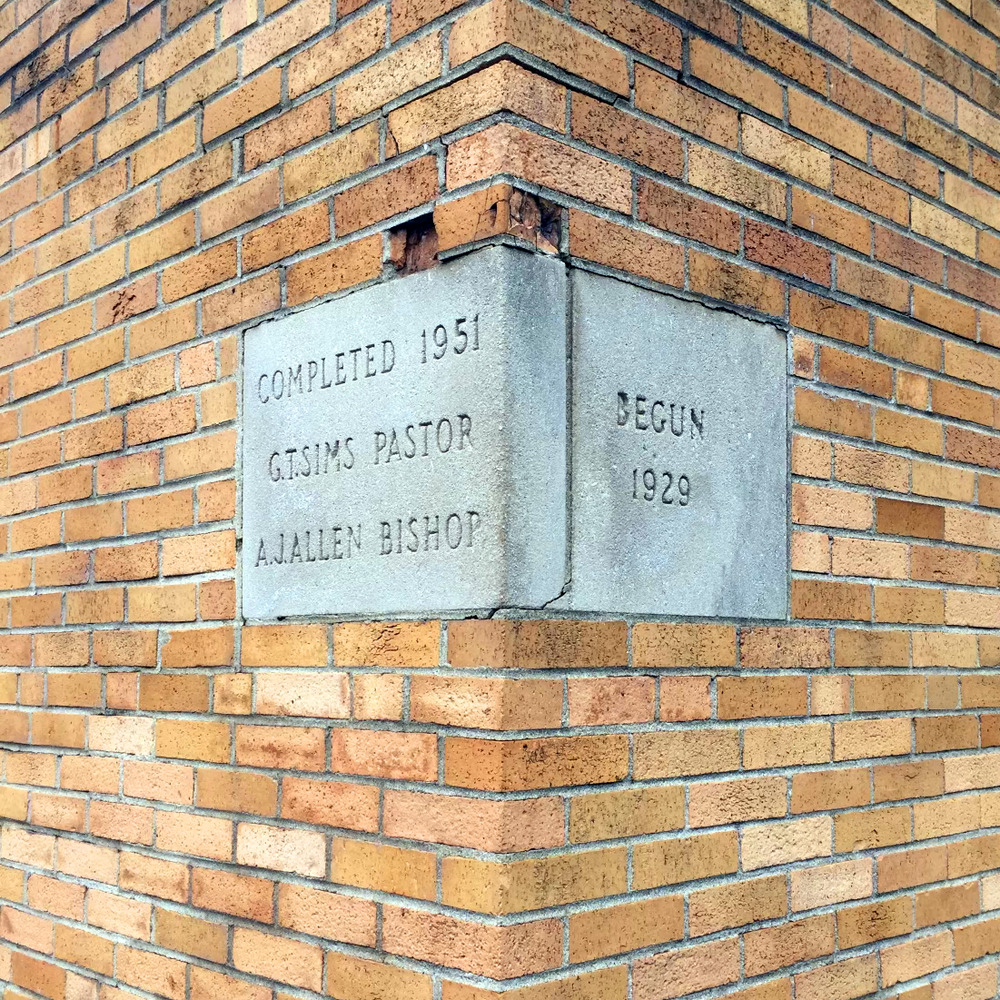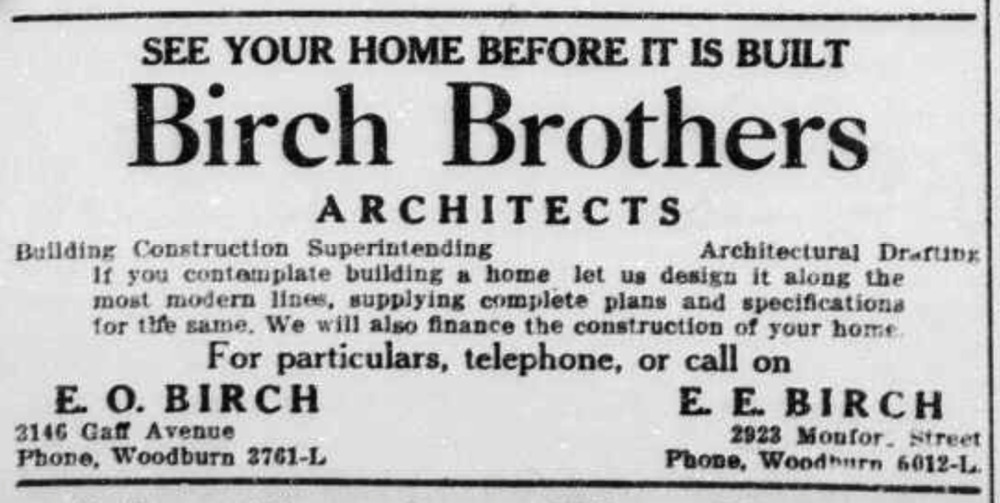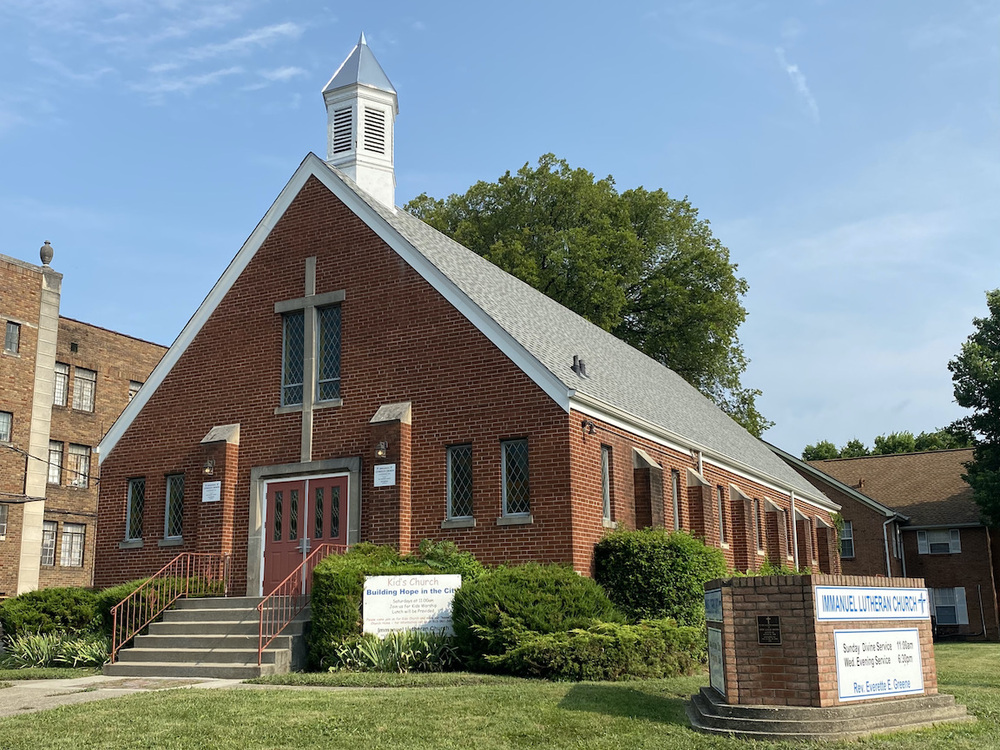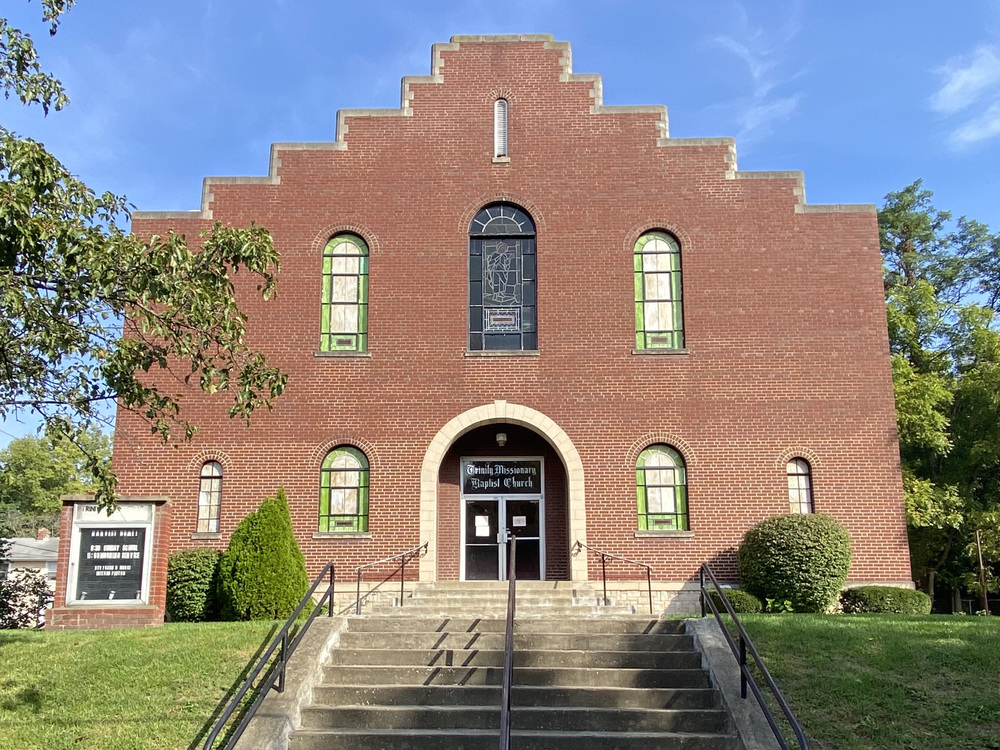Birch Brothers Architectural Firm
A Black-owned architectural firm in pre-Civil Rights movement Cincinnati
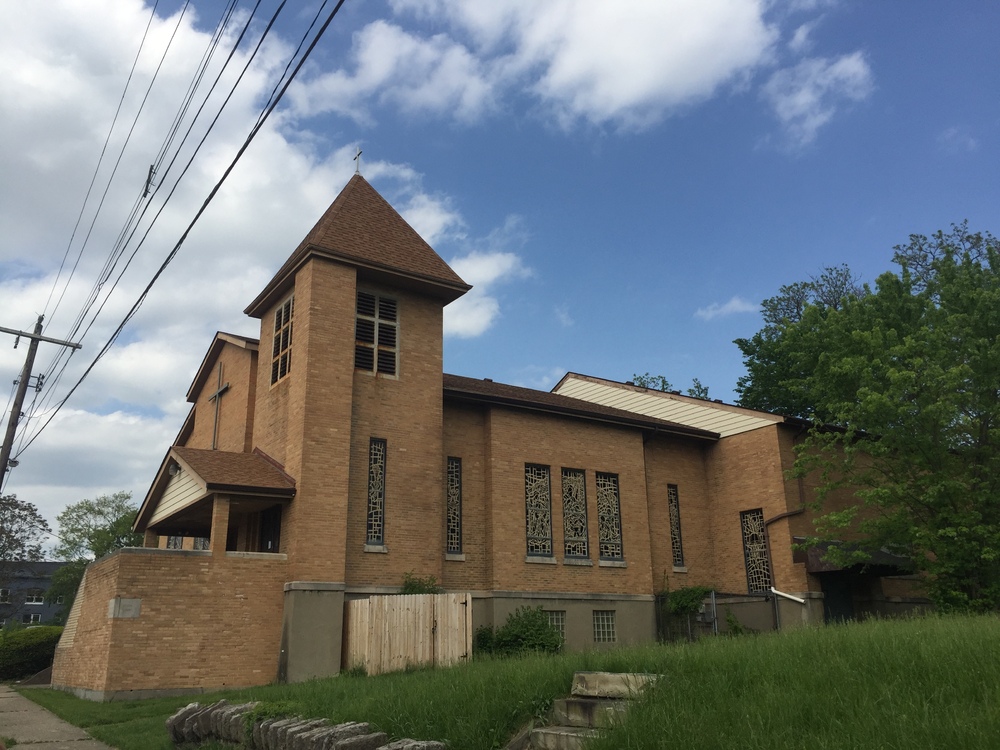
Birch Bros. was the architectural firm of Edward and Ernest Birch, possibly the first Black-owned architectural firm in Cincinnati. They were in business together by 1908.
THE BROTHERS:
Edward E. (Eginton) and his brother Ernest O. (Octavius) were born in Winchester, KY to Jane (née Busch) and Samuel Birch, a barber. The family resided in a modest house at 125 3rd St., and the children attended Winchester public schools.
Ernest Birch, the older of the brothers, graduated from the carpentry program at Kentucky Normal and Industrial Institute for Colored Persons in Frankfort (now Kentucky State University). He moved to Cincinnati and lived at 3146 Gaff Ave. in Walnut Hills. (For more information on him, see the separate article "Earnest Birch" on this site.
Edward Birch, the younger brother, studied architectural engineering at Hampton Normal and Agricultural Institute in Hampton, VA (now Hampton University), working in the school’s laundry to pay his tuition. He apparently withdrew in 1908, before earning his diploma.
Edward married Eva Downey. They had a son named Augustine and divorced in 1916. (Augustine served with the famous “Tuskegee Airmen” in World War II and, upon returning to Cincinnati, worked for the Cincinnati Recreation Department and the Cincinnati Bureau of Employment Services.) Edward later married Susie Whittaker. They lived at 1123 Yale Ave. in Walnut Hills, in a home built in 1890 that still stands.
During World War II, Edward worked as an assistant engineering draftsman in the Engineering Division at Wright Patterson Airfield in Dayton. He also continued his education by taking extension courses at the University of Cincinnati Evening College. Edward is believed to have been a member of the First Church of Christ, Scientist in Walnut Hills. He passed away in 1974.
THE PRACTICE:
In 1908, the duo started an architectural partnership in Cincinnati called the Birch Bros. The first Birch Bros. office was located at 835 West 7th St. (demolished for I-75) in the West End. The brothers eventually worked out of their own homes in Walnut Hills. Among other capabilities, the firm offered construction financing.
The brothers were not licensed but nonetheless advertised themselves as architects in Cincinnati City Directories and in The Union newspaper. They were in practice simultaneously, working together or separately, from 1908 to 1933. Their projects included churches, residences and a hospital addition.
BIRCH BROTHERS' PROJECTS:
(primary or sole designer noted)
Lyons Hospital 8-room addition (Edward)
727 North Ft. Thomas Ave., Fort Thomas, KY
1923
Trinity Missionary Baptist Church (Edward)
6320 Chandler St., Madisonville
1925, completed 1941
4-unit apartment building (Ernest)
424 Forest Ave., Avondale
1927, demolished
Four-unit apartment addition (Ernest)
3871 Vine Street (Clifton)
1927
Addition for use as dance hall (Ernest)
Buena Vista, 160 feet west of Gilbert, Avondale
1927, demolished
Eight car garage (Ernest)
Gilbert and Wehrman Avenues, Avondale
1927, demolished
Four-family apartment building (Ernest)
3428 Harvey Avenue, Avondale
1927
Twelve-family apartments with first-floor retail (Ernest)
1989 Madison Road, O’Bryonville
1928
Brown Chapel African Methodist Episcopal Church (Edward)
2804 Alms Pl., Walnut Hills
1929, completed 1951
Lyons Hospital 30-room building or addition (Edward)
727 North Ft. Thomas Ave., Fort Thomas, KY
1940, unbuilt
Office (possibly attributed to Edward)
Union Baptist Cemetery, West Price Hill
1951
Sexton’s House (Edward)
Union Baptist Cemetery, West Price Hill
1952, unbuilt or demolished
Immanuel Lutheran Church (Edward)
544 Rockdale Ave., Avondale
1956
In 1923, Edward Birch designed a hospital for Dr. Albert F. Lyons in the form of an addition to a Tudor Revival home at 727 North Ft. Thomas Ave. in Fort Thomas, which had been converted to a medical facility. In 1941, Dr. Lyons announced plans for a much larger Birch-designed addition to this facility. It was to be air conditioned, soundproof and fireproof, and promised updated accommodations for expectant fathers. He applied for a zoning variance for the project, which was ultimately denied. It seems notable that a white doctor commissioned a Black architect, twice, to design a project in a primarily white community.
Another notable aspect of the work pertains to the construction of Black churches. The significant dates for Trinity Missionary Baptist Church and Brown Chapel AME Church show the length of time that often transpired between the beginning and completion of a house of worship. Congregants largely financed these projects themselves, and the phases often began with hiring an architect to draw up plans, building a basement or lower level, adding a temporary roof, and using the space while continuing to raise funds to complete the structure. The building thus becomes a physical manifestation of the congregation's self-determination and self-reliance, and its parts have their own significance within the whole.
Rev. Pleasant S. Hill led the congregation when the cornerstone of Brown Chapel African Methodist Episcopal Church was laid in 1929, on land that had been donated by Lane Presbyterian Theological Seminary. The following year, the lower level was completed, providing a temporary place to worship. In 1938, under the leadership of Reverend T.D. Scott, the mortgage for the lower level of the church was burned.
As the congregation explains in its history, "The dynamic Rev. Frank R. Veal arrived in 1941 and revitalized the church. The lower level of the church was still being used for services and he raised funds via the Sacrificial Club, organized in April 1943, to build the upper level sanctuary. Members were asked to sacrifice $1 each week and remarkably, over $35,000 was raised [...] Rev. Veal was assigned to Allen University before seeing his dream of building the upper level to fruition."
The building was ultimately completed in 1951 under the leadership of Reverend Dr. George T. Sims. "This was a dream come true for the congregation and a commemorative plate was produced for the occasion with a drawing of the new church on it." It initially had a flat roof, giving the structure a modern, austere appearance. It was later replaced by the current roof.
Edward Birch has been confirmed as the designer of the Brown Chapel AME Church. We do not know whether Ernest played any role in the project. In any case, the brothers' professional collaboration had ended in 1933, and Ernest passed away a few months before construction of this church was completed.
Images

